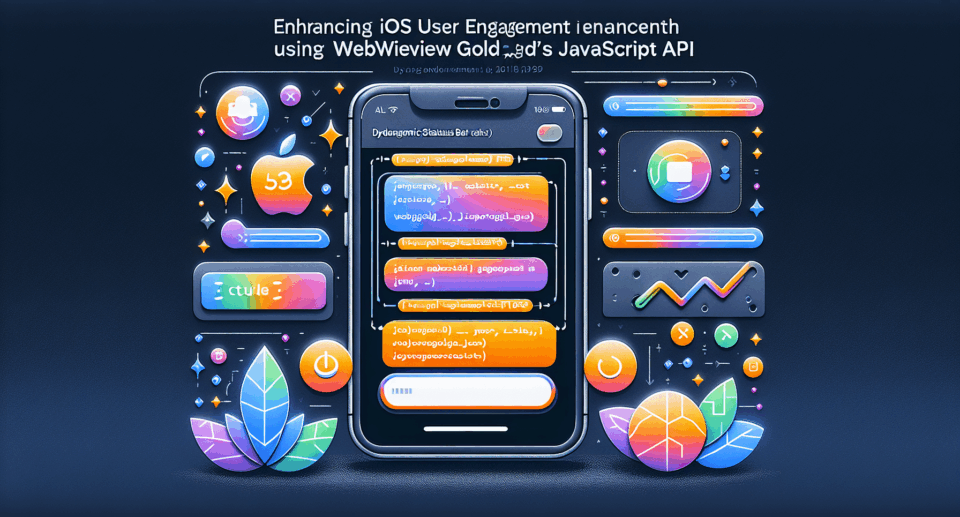Enhancing iOS User Engagement with Dynamic Status Bar Colors Using WebViewGold’s JavaScript API

In today’s digital landscape, keeping users engaged within mobile apps is more critical than ever. One subtle but influential way to enhance user experience is through the dynamic coloring of the status bar in iOS applications. This often-overlooked element can significantly impact how users perceive and interact with your app’s interface. Using WebViewGold‘s JavaScript API, developers can now effortlessly integrate this feature to create a more immersive and engaging user experience.
Why Dynamic Status Bar Colors Matter
The status bar is one of the first elements users notice when they open an application. It’s essentially the gateway between users and the app, providing essential information such as signal strength, battery life, and time. More importantly, its color can affect the overall aesthetics and feel of your app. By customizing it according to your app’s design scheme or the content being displayed, you can achieve a more cohesive and harmonious visual experience.
Dynamically changing the status bar color can also offer functional benefits. For instance, switching to a lighter color when displaying dark-themed content can improve readability and contrast. Similarly, aligning the status bar color with branding elements can reinforce brand identity and make navigation within the app feel more intuitive.
Leveraging WebViewGold for Seamless App Conversion
While elevating user engagement through dynamic status bar colors may sound complex, WebViewGold simplifies the process. WebViewGold serves as a quick and easy solution for converting websites into responsive iOS apps. Catering to developers with varying levels of expertise, it allows you to maintain and enhance web features without extensive redevelopment work.
WebViewGold‘s platform includes a robust JavaScript API to control various native app features, including status bar customization. This means developers can easily apply dynamic color changes using simple JavaScript commands integrated directly into their web code.
How to Implement Dynamic Status Bar Colors with WebViewGold
Integrating dynamic status bar color changes within your WebViewGold-powered iOS app is straightforward:
1. **Set Up Your WebViewGold Environment:** Use WebViewGold to convert your existing website into a mobile app. The platform allows you to retain all the functionality of your website while providing additional features like native controls.
2. **Utilize the JavaScript API:** Leverage WebViewGold‘s JavaScript API to actively change the status bar color. These commands can be tailored to respond to specific user interactions or content changes within the app.
3. **Customize According to Your Design:** Align the status bar color changes with the look and feel of your app. Whether it’s matching the brand palette or adjusting contrast for better visibility, the possibilities are vast.
4. **Test Across Different Scenarios:** Ensure that your dynamic status bar transitions work seamlessly under different scenarios and on multiple devices. Testing ensures not only aesthetic appeal but also functional reliability for your app users.
Conclusion: Enhance Experience with Subtle Yet Impactful Changes
Dynamic status bar color integration is a subtle yet powerful enhancement that can significantly elevate user engagement within iOS apps. Thanks to WebViewGold‘s intuitive solutions, even developers with minimal app development experience can implement this feature effectively. As users become more discerning, maintaining a polished and responsive app interface becomes essential. By leveraging WebViewGold, you can ensure that your app not only meets but exceeds user expectations, making every interaction a visually pleasing experience.
